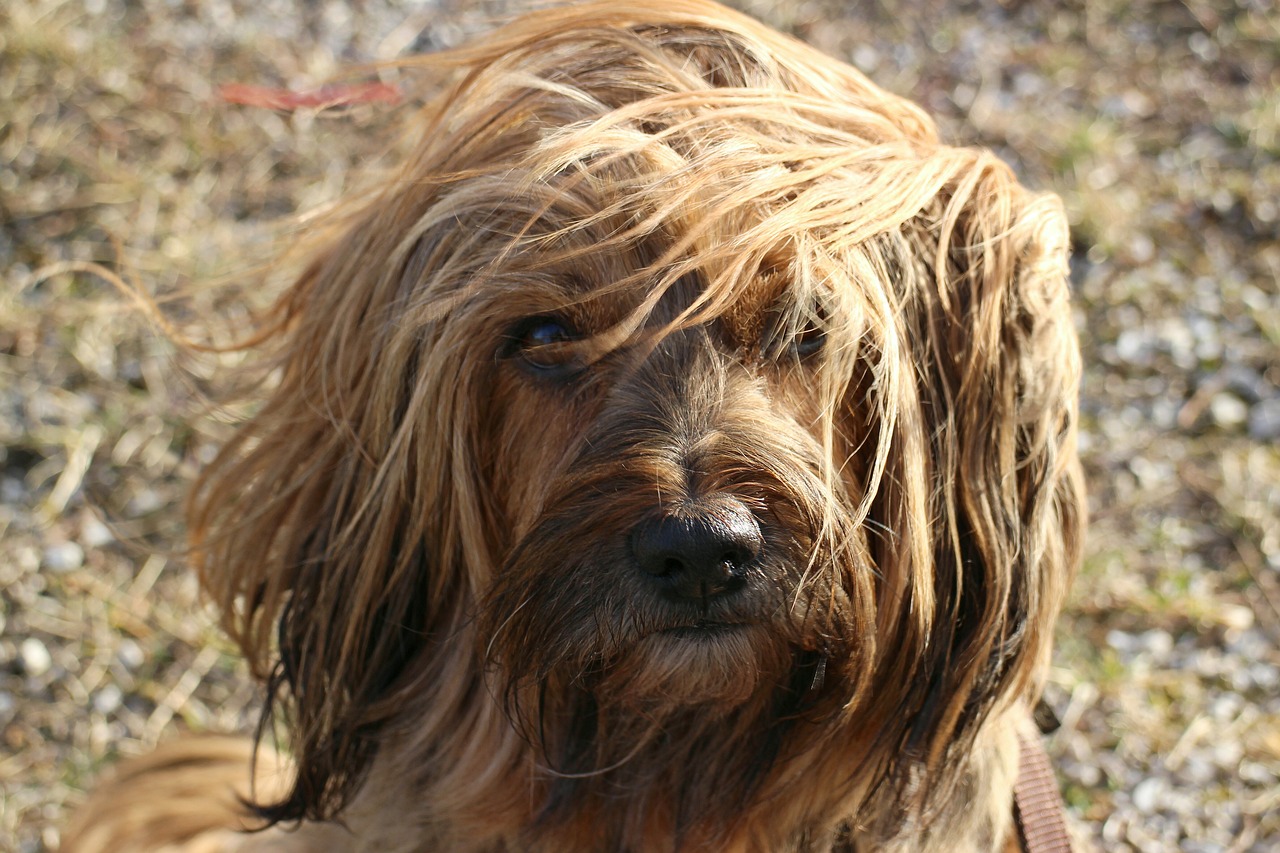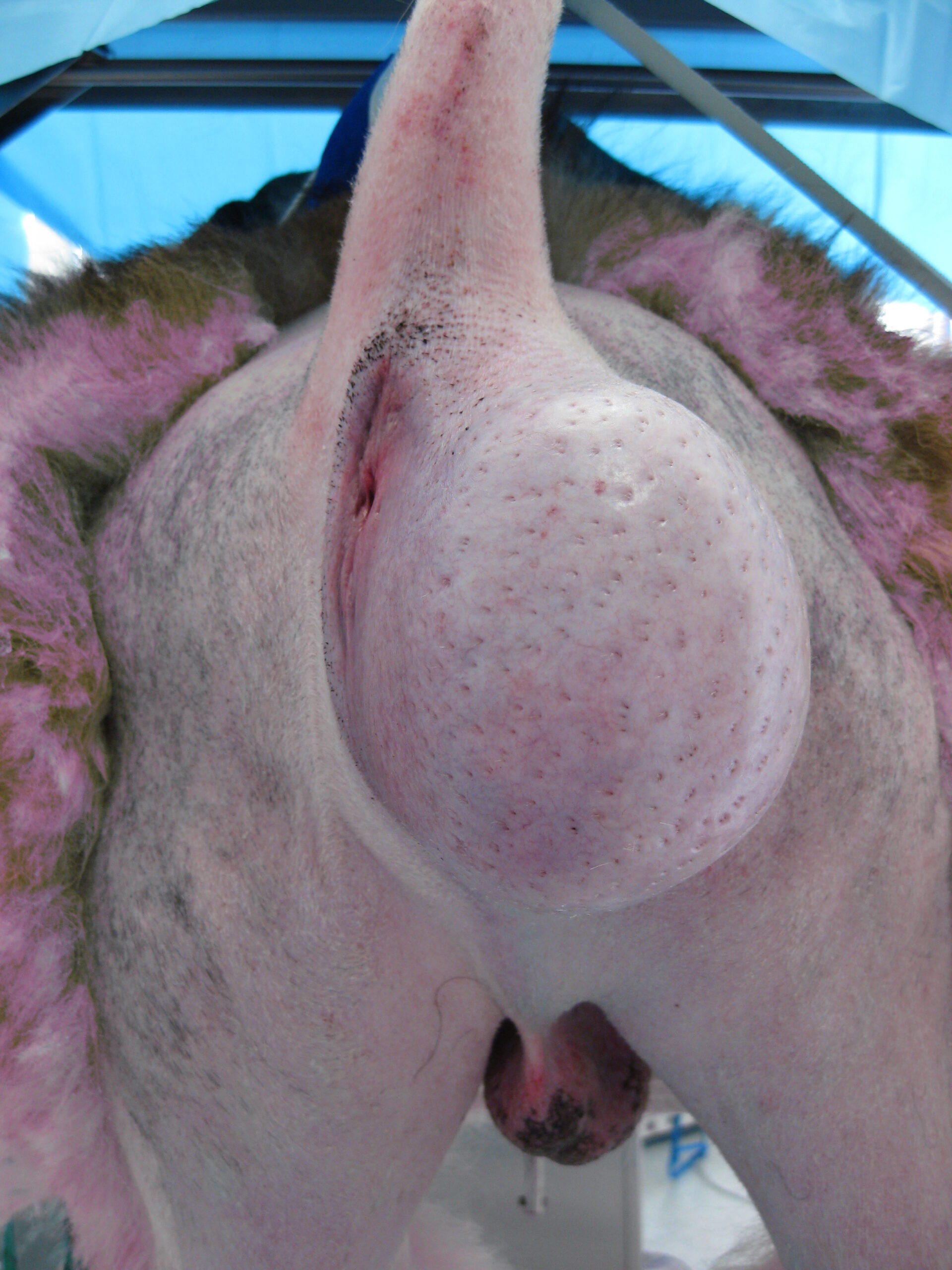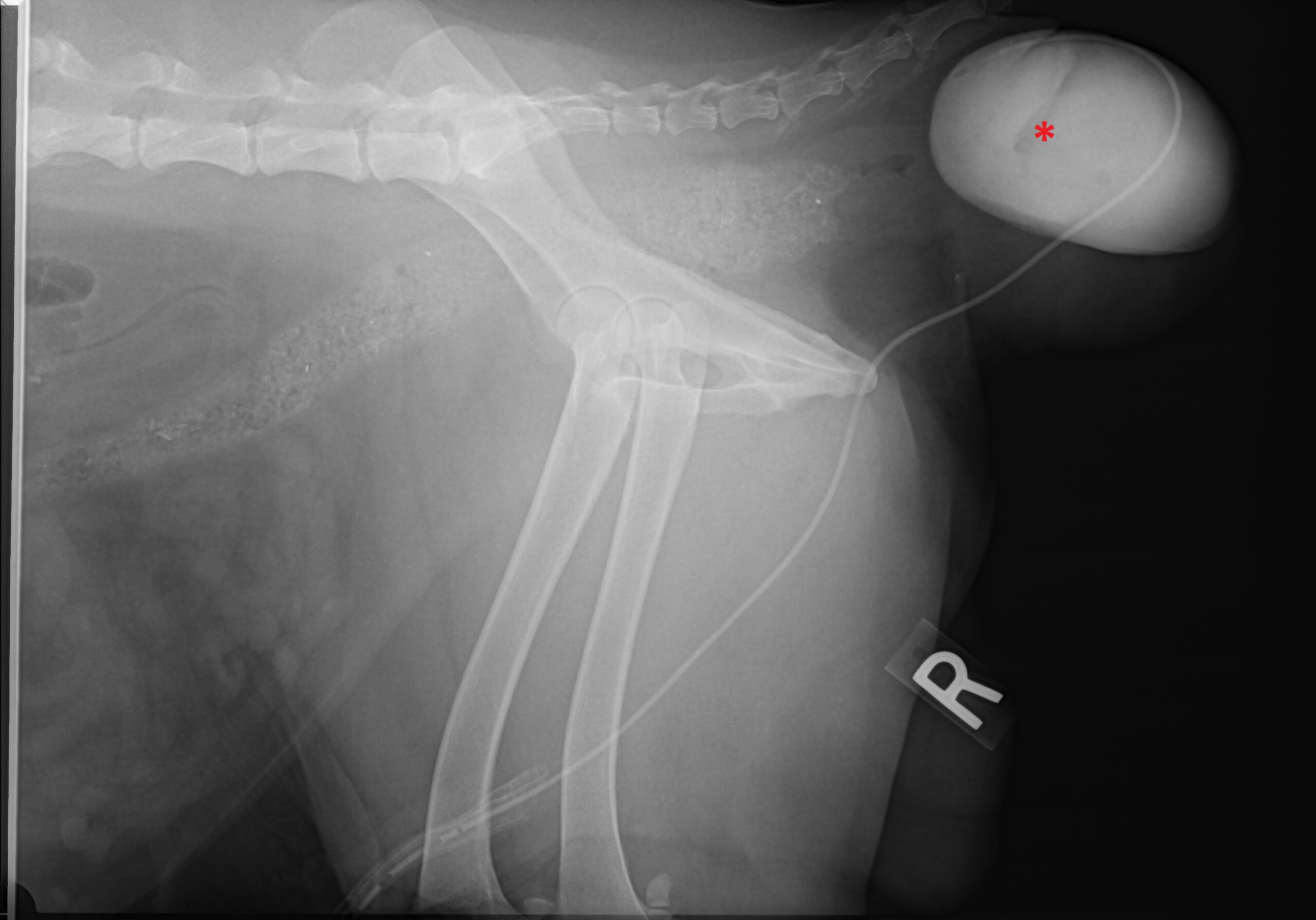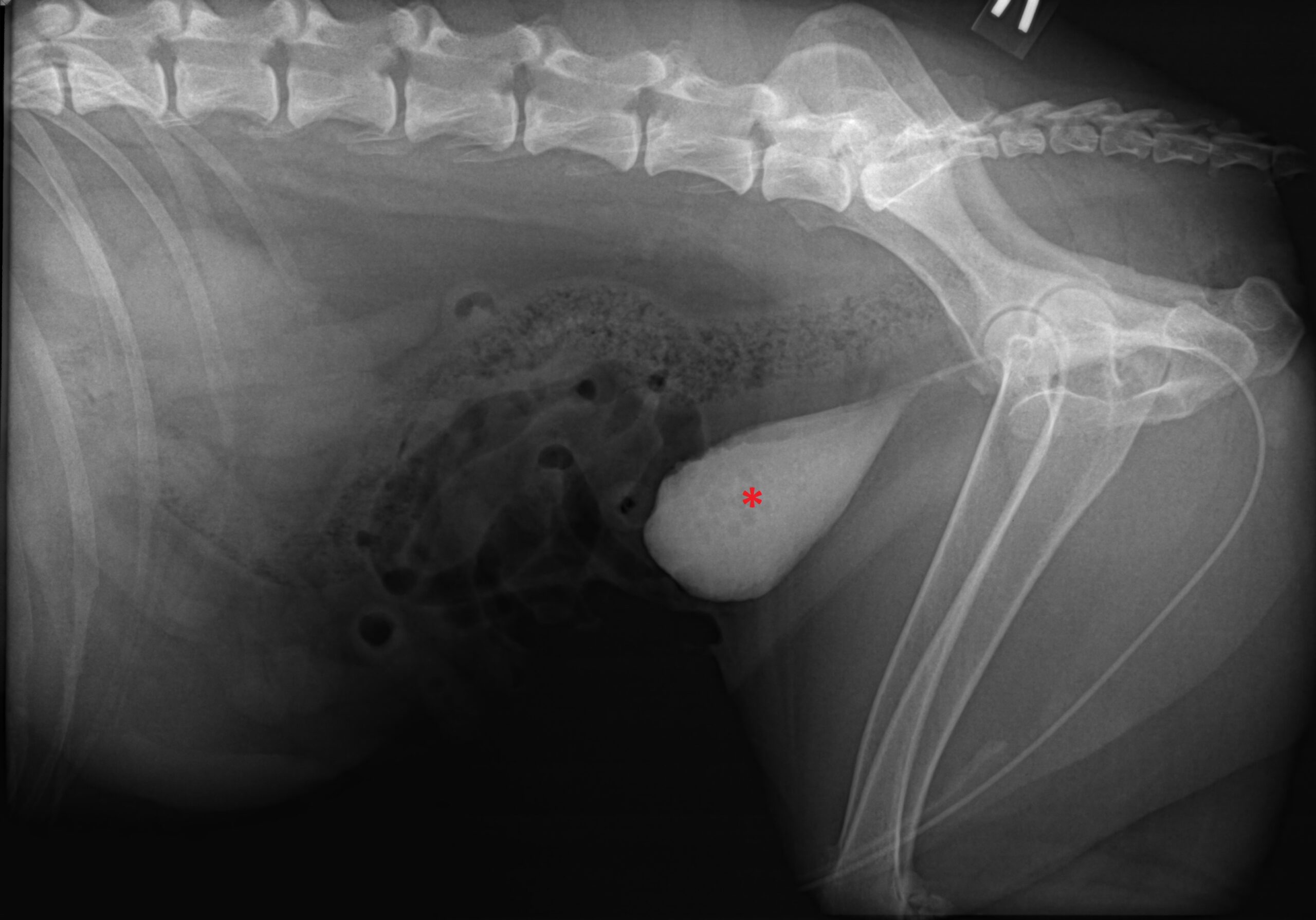
Oliver, an 8 year old terrier, was in trouble.
Pooping became more and more difficult.
He would go outside and squat multiple times, straining, whining and in obvious pain.
Yet not much would come out… sometimes, nothing at all…
He had swelling on the side of his anus that changed in size depending on how much pooping he did.
Lately, the swelling kept getting bigger and bigger…
This anus was pushed off to the opposite side (see picture below).
He progressively became lethargic, depressed and he had a poor appetite.
Various treatments were tried, but none worked long-term: different diets, different sources of fiber, different types of laxatives… The struggle kept getting worse over time.

Massive swelling in another patient. The hernia contained the bladder
Common breeds for this condition include Boston Terriers, Boxers, Collies (including Border Collies), Welsh Corgis, Dachshunds, Pekingese, Pomeranians, Poodles, Old English Sheepdogs, and Huskies.
Why was Oliver constipated?
During our surgery consultation, a simple rectal exam confirmed the suspicion: Oliver had a perineal hernia. This meant sticking a finger exactly where you’re thinking.
Instead of going straight in, the surgeon’s finger went into a big pouch off to the side of the rectum, which was full of hard poop.
The opposite side felt normal however – good news for Oliver.
I’m guessing that at least 25% of our patients have a hernia on both sides.
A hernia is a condition where an organ ends up somewhere it doesn’t belong.
It happens because the muscles that are supposed to keep organs in the belly become weaker over time.
We’re not 100% of the cause for the weakening.
It is suspected that it has to do with too much male hormone, because it mostly happens in male dogs who are not neutered.
It occasionally happens in castrated dogs, as well as female dogs.
Then it doesn’t take much, for example a bout of constipation and straining, for organs to be pushed through the hernia.
How did surgery help Oliver?
Sadly, none of the above treatments work long-term because a hernia is a mechanical problem.
Until the “hole” is fixed, most of the time, any medication and supplement are only a BandAid approach …
So surgery was recommended to treat Oliver.
The hernia contained, as usual, fat and fluid.
Occasionally, we find a piece of intestine, the prostate or even the bladder (see pictures above and below) inside the hernia!

This amazing X-ray shows that this patient’s bladder (not Oliver) moved from the belly to a perineal hernia (see red star).

By comparison, this X-ray shows a patient’s bladder in the normal location, i.e. the belly (see red star).
Surgery basically involves robbing Peter to pay Paul.
We moved a muscle (called the Internal Obturator muscle) from the pelvis into the “hole” and stitched it to other muscles in the area.
The next step was to neuter Oliver to hopefully prevent a hernia from happening on the other side of the anus.
What did Oliver’s recovery look like?
After surgery, Oliver had to rest and wear a plastic cone for 3 weeks.
He received pain medications, antibiotics and a laxative.
After 3 weeks, we progressively increased his activity level, and soon he could enjoy freedom again.
He reportedly made a full recovery and started to poop regularly and comfortably.
And what could be better than that?
If you would like to learn how we can help your pet with safe surgery and anesthesia, please contact us through www.HRVSS.com
Never miss a blog by subscribing here: www.HRVSS.com/blog
Phil Zeltzman, DVM, DACVS, CVJ, Fear Free Certified
